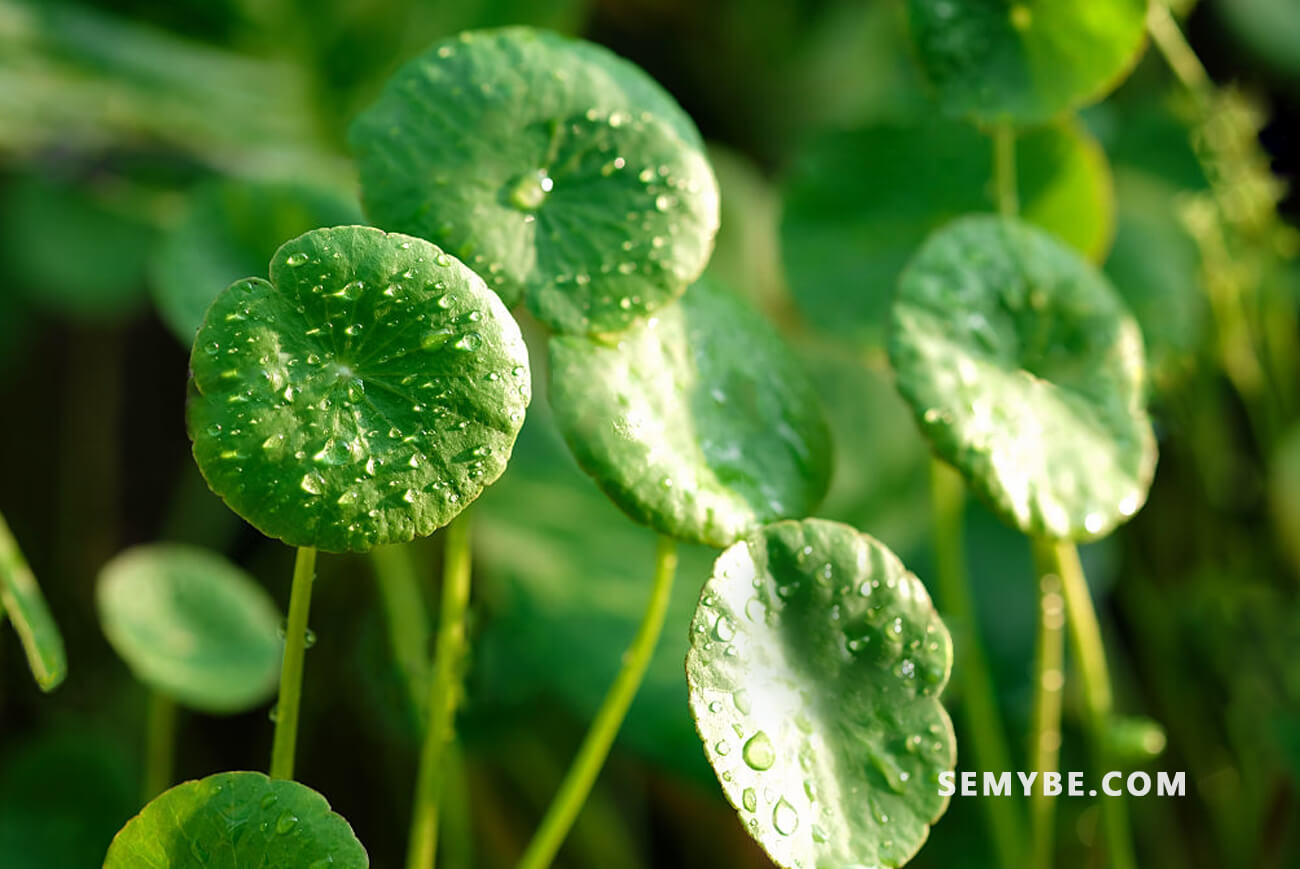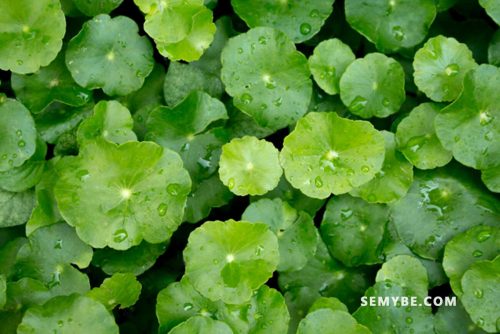
Centella Asiatica
1. History and use
In India and Madagascar, an infusion of the leaves of Centella asiatica has always been used to treat leprosy and other diseases of the skin. On the other hand, this plant has also been used as a diuretic and hypnotic.
2. Description of the plant
It is a herbaceous plant living in a humid environment on shady lawns, for example, the pubescent stems are creeping, the leaves are arranged in a rosette and have a form vaguely resembling a kidney. They are borne by a long petiole of about 12 cm. The flowers are reddish flattened green and the fruit flattened, separating into two elements when ripe.

3. Curative action
The active principle of the plant is a saponoside, the asiaticoside which is not contained of Centella unfortunately all varieties in asiatica. This plant has been very well studied. Plastic tablets of 10 mg of the extract of the plants have allowed the healing of leg ulcers in 50 patients. The extract also cures gastric ulcers provoked in the rat by cold and a studied. Plastic tablets of 10 mg of the extract of the plants have allowed the healing of leg ulcers in 50 patients. The extract also cures gastric ulcers provoked in the rat by cold and a restricted diet. The lesions produced by bilharziasis regress in 75% of cases extract has shown good results in cellulitis and chronic liver diseases.
4. Uses
Cicatrisant Take a large handful of leaves, wash thoroughly and extract the juice by squeezing, apply directly to the wounds of the skin and renew frequently to activate healing.




